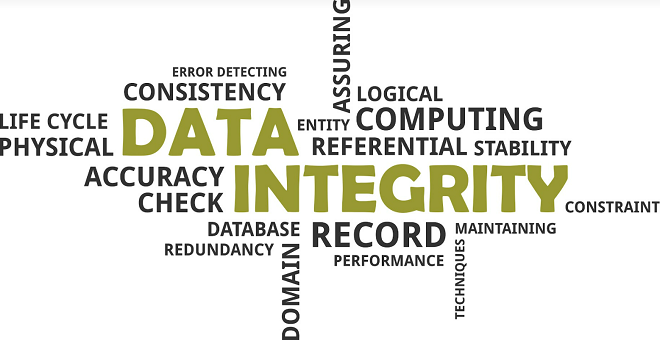Transferred Files: Ensuring Data Integrity During File Transfers

Table of Contents
Understanding the Threats to Transferred Files
The integrity of transferred files is vulnerable to several threats, impacting data reliability and security. These threats span technical issues, malicious attacks, and even human error.
Data Corruption During Transmission
Data corruption during file transfer is a common occurrence. Network issues, hardware malfunctions, and software bugs can all contribute to this problem.
- Bit flips: Errors that alter individual bits within a file, leading to data corruption.
- Packet loss: The loss of data packets during transmission, resulting in incomplete or corrupted files.
- Hardware failures: Hard drive errors, RAM issues, or network device malfunctions can introduce errors into the data stream.
These issues manifest in various ways, from subtle inaccuracies to complete data loss, significantly impacting the reliability of your transferred files. The severity of the corruption depends on the nature and extent of the error.
Malicious Attacks and Data Tampering
Malicious actors actively seek to compromise the integrity of transferred files. Viruses, malware, and man-in-the-middle attacks are common methods employed to tamper with data during transfer.
- Injection attacks: Malicious code is injected into the transferred file, potentially causing damage or stealing sensitive information.
- Data alteration: The content of the file is modified during transit, potentially leading to incorrect results or compromised security.
- Man-in-the-middle attacks: Attackers intercept data during transfer, potentially modifying or stealing it before it reaches its intended destination.
Secure file transfer protocols are essential to mitigate these risks.
Human Error
Human error remains a significant cause of data integrity issues. Careless handling, accidental deletions, or incorrect file manipulation can all lead to data loss or corruption during file transfers.
- Accidental deletion: Files are accidentally deleted before or after the transfer, resulting in irretrievable data loss.
- Incorrect file naming: Files are renamed incorrectly, making them difficult to locate or use.
- Using insecure methods: Transferring sensitive files via unencrypted methods like email.
Implementing strict procedures and best practices can help minimize human errors.
Best Practices for Ensuring Data Integrity of Transferred Files
Protecting the integrity of your transferred files requires a multifaceted approach encompassing secure protocols, robust verification methods, and comprehensive backup strategies.
Employing Secure File Transfer Protocols
Utilizing secure protocols is crucial to protect your data during transfer. Popular options include:
- SFTP (SSH File Transfer Protocol): Offers strong encryption and authentication, ensuring secure file transfer over an SSH connection.
- FTPS (File Transfer Protocol Secure): A secure version of FTP, utilizing SSL/TLS encryption to protect data in transit.
- HTTPS (Hypertext Transfer Protocol Secure): Provides secure communication for transferring files over the web using SSL/TLS encryption.
These protocols employ encryption to protect data from eavesdropping and authentication to verify the identity of the sender and receiver. The choice of protocol depends on specific security requirements and compatibility.
Utilizing File Checksums and Hashing
Checksums, such as MD5 and SHA-256, provide a way to verify data integrity. A checksum is a numerical value calculated from the file's content; any change in the file's content will result in a different checksum.
- Calculation: A hashing algorithm is used to calculate the checksum of the original file before transfer.
- Comparison: After the transfer, the checksum of the received file is calculated and compared to the original. A match confirms data integrity.
Using strong hashing algorithms like SHA-256 is crucial to ensure the reliability of checksum verification.
Implementing Data Backup and Recovery Strategies
Data backup and recovery plans are essential to mitigate the risk of data loss or corruption.
- Full backups: Create complete copies of all transferred files.
- Incremental backups: Backup only changes made since the last backup, saving storage space.
- Cloud storage: Store backups in a secure cloud environment.
- Local storage: Store backups on local drives or network storage.
Having a well-defined data recovery process is crucial in case of corruption or loss.
Regular Security Audits and Updates
Regular security audits and software updates are vital for maintaining data integrity.
- Vulnerability scans: Identify and address security vulnerabilities in your systems.
- Software updates: Regularly update software and applications to patch known security flaws.
- Penetration testing: Simulate attacks to identify weaknesses in your security posture.
Tools and Technologies for Secure File Transfers
Several tools and technologies facilitate secure file transfers. These include dedicated secure file transfer software, cloud-based services, and integrated features within operating systems. When choosing a tool, prioritize features such as end-to-end encryption, checksum verification, and robust audit trails. Research options that best suit your needs and environment. (Note: Specific software recommendations would be included here if permission was granted for product promotion).
Safeguarding Your Transferred Files: A Summary and Call to Action
Data integrity during file transfers is crucial to prevent data loss and security breaches. Threats range from technical issues and malicious attacks to human error. Implementing secure file transfer protocols, utilizing checksums, employing robust backup strategies, and performing regular security audits are critical steps to safeguard your data. Protect your valuable data by implementing these best practices for managing your transferred files today!

Featured Posts
-
 Xrp Price Prediction 3 Reasons For Potential Xrp Surge And Remittix Ico Success
May 08, 2025
Xrp Price Prediction 3 Reasons For Potential Xrp Surge And Remittix Ico Success
May 08, 2025 -
 Barcelona Vs Inter Milan Six Goal Thriller In Champions League Semi Final
May 08, 2025
Barcelona Vs Inter Milan Six Goal Thriller In Champions League Semi Final
May 08, 2025 -
 The Life Of Chuck Movie Trailer Released Earns Stephen Kings Praise
May 08, 2025
The Life Of Chuck Movie Trailer Released Earns Stephen Kings Praise
May 08, 2025 -
 Inters Stunning Champions League Victory Over Bayern Munich
May 08, 2025
Inters Stunning Champions League Victory Over Bayern Munich
May 08, 2025 -
 Open Ai Under Ftc Scrutiny Chat Gpts Data Practices Examined
May 08, 2025
Open Ai Under Ftc Scrutiny Chat Gpts Data Practices Examined
May 08, 2025
